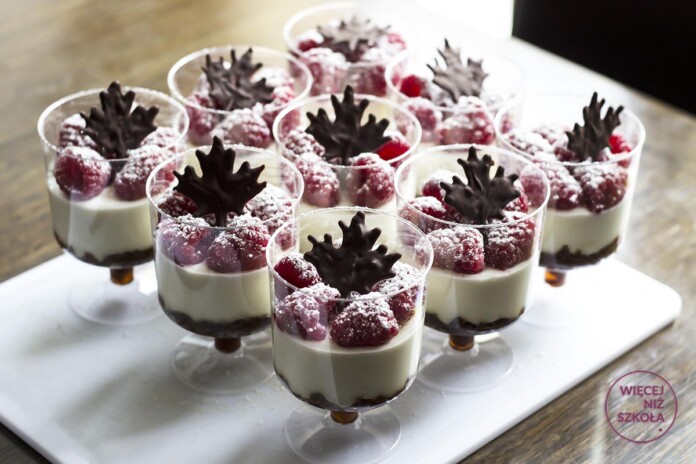Wiosna nadciąga, z żywymi kolorami, dziękami i zapachami. Wraz z nią ujrzymy nowy numer naszego anglojęzycznego magazynu AimHigh. Dzisiaj pierwsza oznaka tej świeżości – o feerii kolorów i zapachów kanadyjskiej kuchni opowie nam Oliwia Zielińska, z klasy 2c. Zapraszamy do lektury!
==========================
Canadian cuisine
What is the Canadian food like? Most people would say poutine (a Quebec classic), maple syrup, Saskatoon berries, Nanaimo bars and butter tarts. The former prime minister, Joe Clark, once described Canadian cuisine as „smorgasbord”, a type of Scandinavian meal originating in Sweden that describes a buffet table with many dishes, hot and cold. I think what makes Canadian cuisine unique is the multicultural variety of foods.
Canadian cuisine is influenced by the indigenous people, but also English, French, Italian, Ukrainian, Russian, Polish, Chinese, Vietnamese, Iranian, Jamaican, Indian, Sri Lankan and many other different cultures. In Canada, people can still retain their own culture, even though they’re also a part of the country. This is apparent in the various kinds of food that can be found in different places in the country. Due to its diverse population and landscape, Canada has created a unique food culture. It has various components, such as the ingredients that are grown within the country. But most of all, it is the combination of cultures that makes it special. Having cuisines from different countries in your kitchen is an exciting and educational experience for children and families. It allows them to learn about different cultures and their food. It also creates memories in the kitchen. For example, I love Toronto-based blogger Puneeta Chhitwal-Varma’s take on the Indian food in Canada on her blog, Maple and Marigold. For African, Caribbean, North and South American food, look to Black Foodie, created by Eden Hagos. Indigenous Food First is an educational Indigenous food and recipe blog. And Vancouver-based food blogger and YouTuber Pailin Chongchitnant has got you covered for Thai cuisine. As I mentioned earlier immigration continuing to drive Canada’s population growth and alter its ethnic makeup, a new study says these factors are being reflected in how the Canadians eat. The Mintel study found that nearly three quarters (73%) of Canadians like to experience other cultures through food, with more than half (57%) indicating they are more willing to try ethnic foods than they were a few years ago. While traditional ethnic foods such as Chinese (89%), Italian (84%) and Latin American/Mexican (82%) remain hugely popular among Canadians, the study says consumers are increasingly seeking out “less prominent” cuisines from other ethnic groups in an attempt to break the “monotony” of mealtime. While only 20% of Canadians have eaten African-inspired food, for example, half of respondents indicated that they are interested in doing so. Similarly, while just one-third of consumers have eaten Southeast Asian food, 44% said they are interested in trying such a dish.
Summing up, what I love most about the Canadian food scene is its diversity. We all know what French or Thai cuisine are like, but Canada, being such a diverse country with so many cultural influences, has so much more culinary options. You can find any kind of cuisine you want, pretty much right across the country. Canada is all about inclusion, togetherness and variety and food reflects that perfectly.
Oliwia Zielińska 2c


















